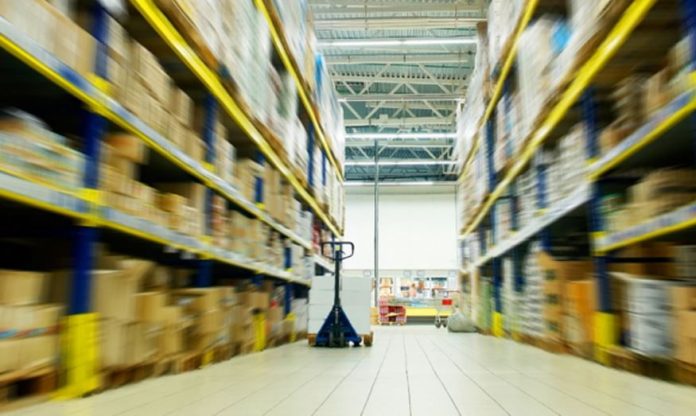For Nokia there are three critical technologies for enabling digital transformation of the supply chain, and all of the points along it, including the production, transportation, and storage of goods.
These technologies are private networks, indoor positioning, and advanced analytics. “The combination will be of high importance moving forward,” comments André Franciss, in charge of wireless industrial solutions at the Finnish vendor.
These three are the focus of Nokia’s own testing, anyway, as it seeks to transform its own manufacturing and logistics centres, just as it looks to offer industrial transformation as-a-service, rolled up with new mobile gear and software initiatives.
“There is a lot of commonality in digitalisation use cases for manufacturing and logistic hubs, like warehouses, ports, and so on,” explains Franciss. “Logistics is being embedded into the manufacturing process – a process known as intralogistics.”

The market for private LTE and 5G networks is primed, reckons Nokia. It has calculated no fewer than 14.58 million potential venues for private cellular. The biggest market is the industrial and manufacturing space, home to 10.7 million candidate sites, it says. Nokia estimates there are around 50,000 transport hubs as well.
It is involved in a number of experiments, notably with shipping ports. “Ports are an integral part of the global supply chain, handling huge volumes of trade on a daily basis. We are engaged with many port authorities and operators working at these ports – primarily in areas of private LTE/5G network for communication, IoT for asset monitoring and maintenance, and advanced data analytics,” says Franciss.
Nokia has just completed an 18-month field test of 5G slicing and industrial IoT at the Port of Hamburg, along with Deutsche Telekom. As well, it has just signed a two-year deal with private networking specialist Ukkoverkot and port machinery maker Kalmar, a spin-out company from Kone Corporation, to design, build, and operate a private LTE network using Nokia’s digital automation platform.
It is the latest in a line of work with Ukkoverkot, and caps a flurry of activity in the supply-chain market.
A private-network deal with Chinese auto-maker FAW to spur digital transformation of its industrial machines and processes was signed last month. Nokia is building private LTE and 5G coverage for the ARENA2036 automotive research factory in Stuttgart, in Germany, in collaboration with the likes of Daimler, Bosch and TRUMPF. It has also joined with Finnish operator Telia and US chip-maker Intel to run a series of 5G smart factory tests at its own factory in Finland.
Private cellular networks are crucial for the types of “stringent mobile communications that cannot be fulfilled by Wi-Fi”, says Franciss. Indoor positioning and advanced analytics bring additional benefits. Nokia has solutions for each, of course. Here, Franciss talks us through Nokia’s trio of industrial-change tech, and its view of the future of private networking.
How is Nokia digitalising its own supply chain?
“Nokia has improved its supply chain by focusing on optimisation and digitalisation of warehouse operations. With LTE/5G network technologies, we provide the massive connectivity needed within warehouses.
“With our scene analytics and IoT applications for industries, we can also assist with optimising operations through AI and machine learning technologies, making an end-to-end solution for the supply-chain digitalisation.
“We have deployed many innovations at our two factories in Chennai in India and Oulu in Finland. These innovations include private LTE/5G campus networks, high-accuracy indoor positioning (HAIP) to track performance KPIs, video scene analytics on the shop floor, and more.”
What technologies are you using, and what has the impact been?
“These are the three main technologies: LTE/5G campus networks to cover all communications, our HAIP indoor positioning product, and advanced analytics solution for hub and processes optimisation.
“In the case of end-to-end track-and-trace, various technologies are being used, from LPWA to cellular global coverage trackers. However, the technology for these use cases is evolving and new capabilities are implemented each day.
“As tests are not final, we cannot say (what the impact has been) just yet. What is clear in our minds is a combination of these three technologies will be of high importance for manufacturing and logistics hubs moving forward.
“[But] one example has come from connecting AGVs with private LTE. Before, AGVs would stop quite often due to lack of connectivity when transitioning from one Wi-Fi access point to the other. We had to keep chasing AGVs to make them run again.
“The problem vanished by connecting them with LTE. It is a very simple and down-to-earth use case, but one that has brought lots of benefits. With HAIP solution, we were able to observe heatmaps and process patterns, which haved proved useful for process and performance optimisation.”
What have you learned from engaging these technologies?
“While current processes work well, as a result of decades’ of process evolution, new technologies open the door to the next round of optimisation. These technologies allow us to reach a level of automation, cost, safety and quality that was not possible before.
“Also, if we want to make a real impact, we must change the way a process works. And that requires many things: technologies we have ourselves, technologies our partners have, and the ability of management to overcome resistance to change. It’s a fascinating journey.”
What role does private LTE play?
“Private LTE is an industry-proven technology with a broad eco-system that is used to connect people and things. Its highly flexible and distributed network architecture supports a wide range of industrial use cases, from connecting massive quantities of sensors, to cloud robotics, while also delivering high-capacity data transmissions like video streaming and AR/VR to other devices.
“All these applications can be supported on a common network infrastructure. So, instead of having different networks to connect the virtual and physical world, you simply have one.
“A lot of digitalisation uses cases can already be served using LTE. We recommend starting with LTE, as the ecosystem is already there. At the same time, there are certain use cases that can only be supported with 5G.”
What use cases cannot only be served by 5G?
“Use cases that require extremely low latency and high reliability cannot be served by LTE. That’s typically only for cloud robotics, where for instance, you could steer your AGV fleet with the intelligence for traffic management in the local cloud and with 5G to connect the AGVs.
“Also, in 5G we increase the quantity of devices that can be served, which requires both more capacity with enhanced mobile broadband capability and/or low power devices with massive machine communication.
“In addition, 5G supports all these different use cases, each one with different requirements in the quality-of-service with their own dedicated set of network resources. That’s what network slicing is used for – a key feature of 5G networks.”
What role will cellular LPWA technologies play in the supply chain?
“While the ecosystem of LTE capable devices is growing, for now, unfortunately coverage is not where we would like it to be. You cannot do worldwide track-and-trace using these technologies.
“But that will come. And we see it as the main technology for asset tracking in the future, both outdoors on-the-go by connecting with the public networks, and indoors by connecting with the private networks.”
What about non-cellular LPWA technologies?
“The non-cellular LPWA technologies play an important role. They had a headstart compared with cellular LPWA, which means that their coverage and price-point is still in a better position today.
“But that is changing fast. With operators starting to enable cellular LPWA, coverage is growing exponentially. Price-points are also falling quickly, as the numbers of devices increase.
“We expect cellular LPWA will play the major role for global end-to-end track-and-trace, enabled by roaming agreements between the operators. Having said that, non-cellular LPWA will certainly play an important role also in other industries – especially for enterprises that operate locally and don’t have a licensed spectrum, but still want to build and control their own networks.”

